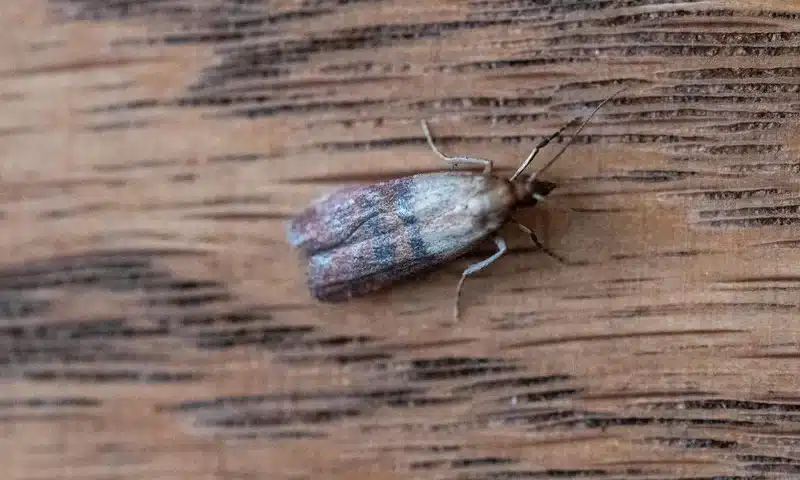Have you ever spotted a fluttering insect in your home and wondered whether you’re looking at a harmless butterfly or a potentially problematic moth? The moth vs butterfly question comes up frequently in our line of work. As a registered pest control technician serving the DC metro area for several years, I’ve fielded countless calls from homeowners who can’t tell the difference between these two similar insects.
Understanding the distinction matters more than you might think. While butterflies rarely cause problems indoors, certain moth species can damage your clothes, contaminate stored food, or signal bigger pest issues. In our family business, which has served the DMV area for over 50 years, we’ve seen how proper identification helps homeowners know when they need professional help and when they can simply enjoy watching a beautiful butterfly.
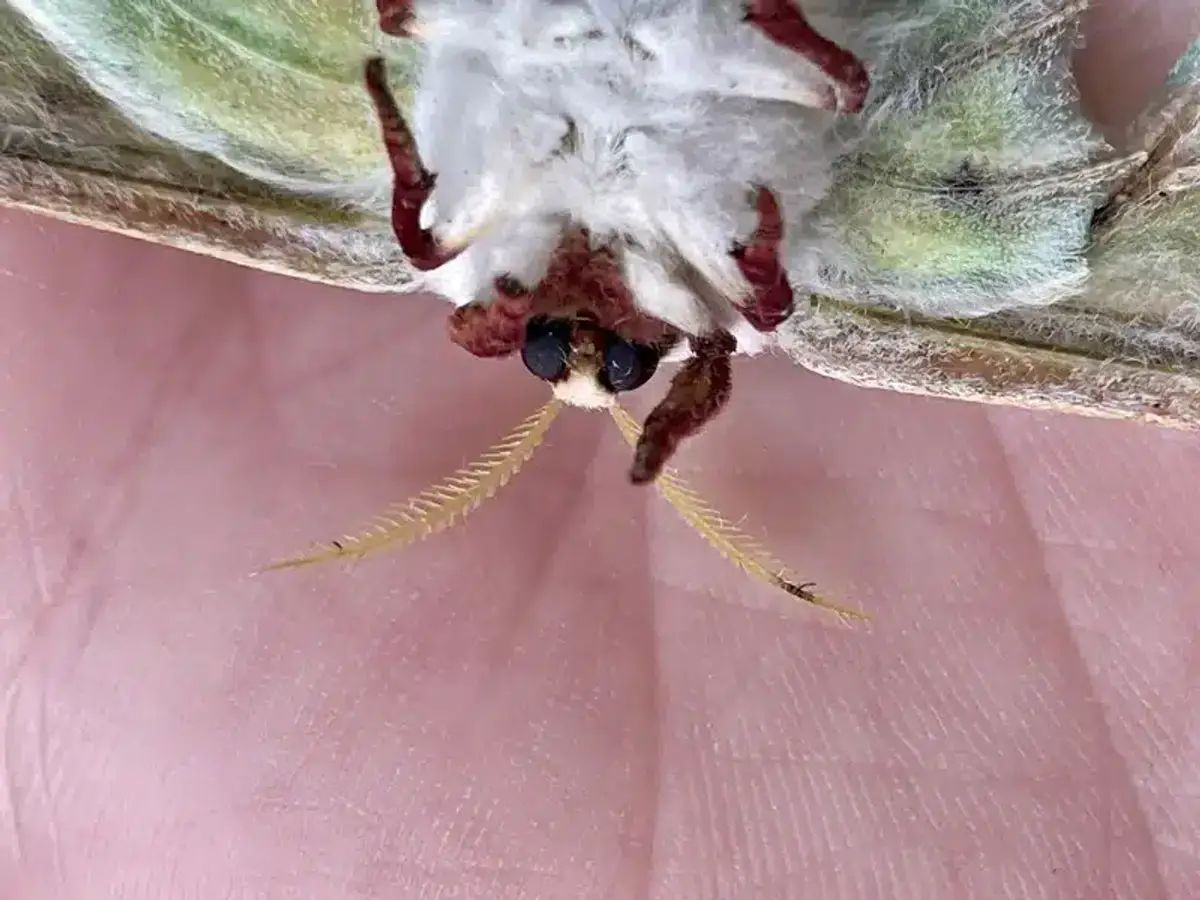
Key Physical Differences Between Moths and Butterflies
The easiest way to tell a moth vs butterfly apart is by examining their physical features. Once you know what to look for, identification becomes much simpler.
Antennae: The Most Reliable Identification Tool
The antennae provide the most foolproof way to distinguish between these insects. Butterflies have thin antennae that end in a distinct club or hook shape. Moths, on the other hand, have antennae that appear feathery, saw-toothed, or thread-like - but never club-shaped.
Male moths often have especially elaborate, feathery antennae. These specialized structures help them detect female pheromones from impressive distances during nighttime mating flights.
Body Shape and Texture
Moths typically have stouter, fuzzier bodies compared to butterflies. This extra “fur” helps them retain body heat during cooler evening and nighttime activity periods. Butterflies tend to have slender, smoother bodies that work better for daytime flight in warmer conditions.
Wing Position When Resting
Watch how the insect holds its wings when it lands. Butterflies almost always rest with their wings held vertically above their backs, like a book standing open. Moths typically rest with wings spread horizontally or folded tent-like over their bodies.
This difference in resting posture often helps moths hide their brightly colored hind wings, which they can flash suddenly to startle predators.
| Feature | Moths | Butterflies |
|---|---|---|
| Antennae | Feathery, thread-like, or saw-toothed | Thin with club-shaped ends |
| Activity Time | Night, evening, early morning | Daytime only |
| Wing Position | Horizontal or tent-like | Vertical above back |
| Body Shape | Stout and fuzzy | Slender and smooth |
| Pest Potential | Can damage clothes & food | Rarely problematic indoors |
Behavioral Differences: Activity Patterns and Flight Styles
Beyond physical features, moths and butterflies behave quite differently. These behavioral clues can help you identify which type of insect you’re observing.
When They’re Active
Butterflies are strictly daytime fliers. If you see one of these insects fluttering around during daylight hours, especially in bright sunshine, it’s almost certainly a butterfly. Moths are primarily active during evening, night, and early morning hours.
However, some moth species do fly during the day. Clearwing hawkmoths and certain tiger moth species can be spotted in daylight, which sometimes confuses homeowners trying to make an identification.
Flight Patterns
Butterflies typically display an erratic, zigzag flight pattern. This seemingly random movement actually helps them avoid predators by making their path unpredictable.
Moths use different flight strategies depending on their size. Larger moths with broad wings create bobbing, unsteady flight patterns. Smaller moths often fly in steadier, more direct paths toward their destinations.
Light Attraction
One of the most noticeable behavioral differences involves artificial lights. Moths are famous for their attraction to lamps, porch lights, and other bright sources after dark.
What does the science say?
According to entomological research, moth attraction to artificial light results from their natural navigation system called transverse orientation. Moths evolved to use distant celestial objects like the moon as reference points for maintaining straight flight paths. When moths encounter close artificial lights, this navigation system becomes confused, causing them to spiral toward the light source. This behavior, called positive phototaxis, is specific to nocturnal species and doesn’t occur in butterflies, which use the sun’s position and polarized light patterns for daytime navigation.
Butterflies don’t show this same attraction to artificial lights, since they navigate using the sun and other daytime visual cues.
Understanding the Moth vs Butterfly Life Cycle
Both moths and butterflies undergo complete metamorphosis: egg, larva (caterpillar), pupa, and adult. However, their pupal stages differ in ways that matter for homeowners.
Butterfly larvae form an exposed chrysalis that hangs from plant stems or other surfaces. Moth larvae typically spin silk cocoons or pupate underground, depending on the species.
If you find webbing or silk-covered areas in your home, you’re likely dealing with moths rather than butterflies. This distinction becomes especially important when identifying potential pest problems indoors.
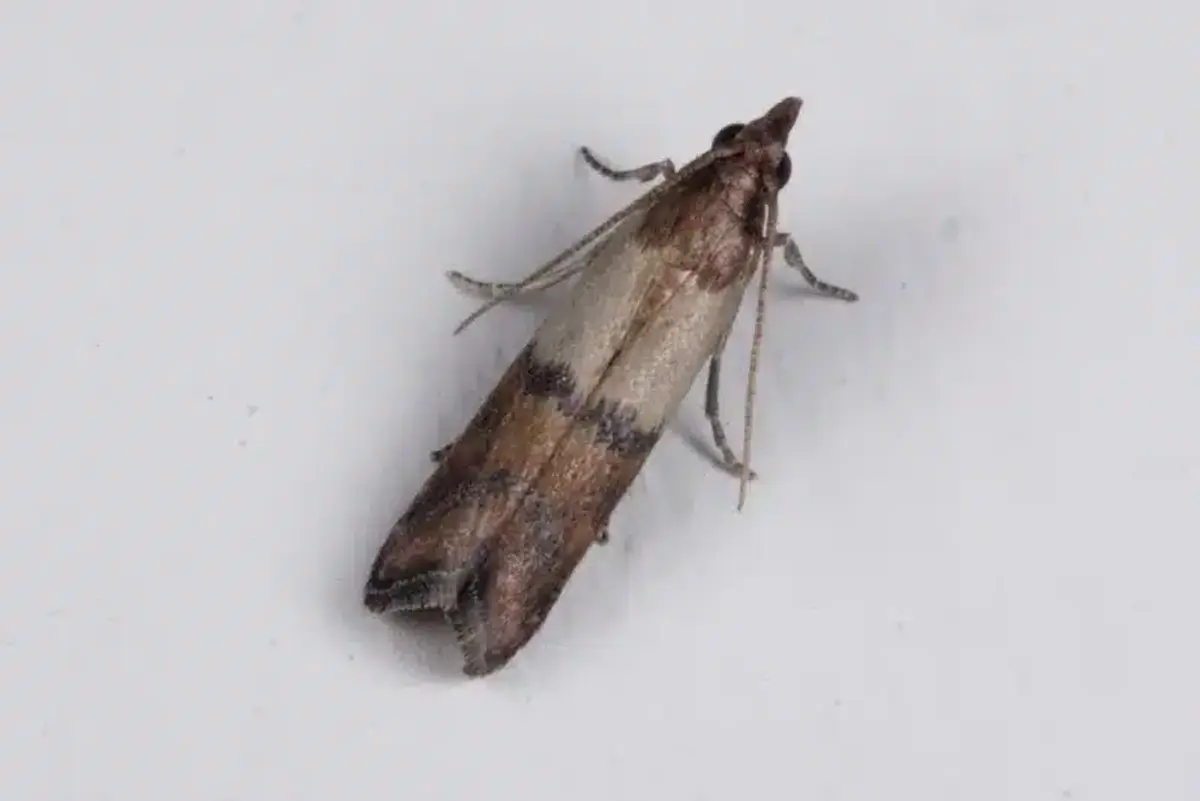
Problematic Moth Species in DMV Area Homes
While butterflies rarely become indoor pests, several moth species can cause real problems for homeowners in Virginia, Maryland, and DC. Our team encounters these species regularly during service calls.
Clothes Moths: Fabric Destroyers
Two main species attack clothing and fabrics in our area. The webbing clothes moth appears golden-buff colored and avoids light whenever possible. Females lay 40-50 eggs directly on wool, fur, feathers, and other natural fibers.
The case-making clothes moth looks similar but creates portable silk cases that larvae carry around while feeding. Both species can complete their life cycle in 65-90 days indoors, meaning infestations persist year-round in heated homes.
These moths create irregular holes in clothing, leave sand-like waste particles, and produce silken tubes under collars or in carpet edges. If you spot these signs, you’re definitely dealing with moths rather than butterflies.
Pantry Moths: Food Contaminators
The Indian meal moth ranks as the most common pantry pest we encounter. Adults measure about half an inch across and display distinctive bi-colored forewings. Their larvae create webbing over cereals, bird seed, pet food, and other stored products.
These moths can produce 4-6 generations annually indoors. Homeowners often spot wandering mature larvae on ceilings before they pupate in cupboard crevices. For detailed information on identifying and eliminating these pests, check out our guide on how to get rid of pantry moths.
Outdoor Threats: Spongy Moths
The invasive spongy moth has become established throughout Virginia, Maryland, and DC. While primarily an outdoor forest pest, these moths can affect homeowners when egg masses attach to firewood, patio furniture, or other items that get moved indoors.
Male spongy moths fly both day and night, which can confuse homeowners trying to distinguish them from butterflies. However, their brown coloration and preference for landing on outdoor surfaces typically gives them away.

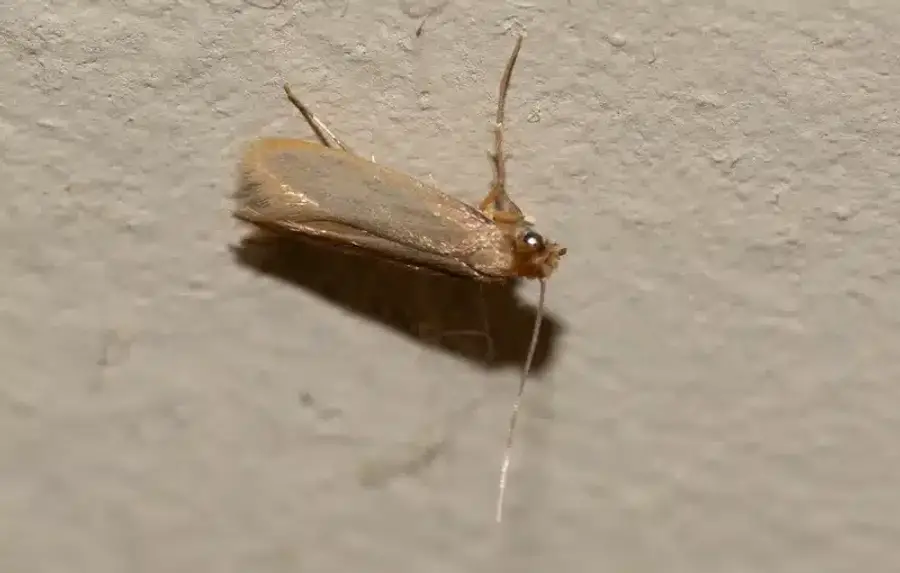
Signs You Have a Moth Problem vs Butterfly Visitors
Recognizing the difference between a moth vs butterfly becomes crucial when you start seeing damage or other concerning signs. Our experience in the DMV area shows these indicators typically point to moth issues rather than butterfly visits.
Fabric Damage Indicators
Look for irregular holes in wool sweaters, silk items, or other natural fiber clothing. You might also notice threadbare patches, especially in hidden areas like under collars or along seams where clothes moths prefer to feed.
Additionally, check for sand-like particles (frass) around damaged items and silken tubes or webbing in closet corners or under furniture edges.
Food Storage Problems
Pantry moths leave distinctive calling cards. Watch for clumping or webbing in grain products, shed larval skins in cupboards, and small moths flying around kitchen areas during evening hours.
If you’re unsure whether those small brown flying insects are moths or something else, our article comparing gnats vs fruit flies might help with the identification process.
Outdoor Activity Patterns
Large numbers of moths around exterior lights during summer evenings often indicate nearby breeding populations. Unlike butterflies, which you’d see during sunny days, problematic moth species tend to emerge after sunset.
Moth vs Butterfly Prevention and Control Strategies
Understanding the moth vs butterfly distinction helps you take appropriate action. Since butterflies rarely require control measures, focus your efforts on preventing and managing moth problems.
Protecting Stored Items from Moths
Store woolens and other natural fiber items in airtight containers during off-seasons. Cedar blocks provide some deterrent effect, but you’ll need to sand them regularly to refresh the essential oils.
For food storage areas, use airtight containers for grains, pet food, and bird seed. Regular cleaning of pantry shelves removes eggs and larvae before they can develop into adult moths.
Essential Moth vs Butterfly Identification Steps
- Check the Antennae: Club-shaped ends indicate butterflies; feathery, thread-like, or saw-toothed antennae mean moths
- Note Activity Time: Daytime fliers are butterflies; evening and nighttime activity suggests moths
- Observe Wing Position: Vertical wings above the back indicate butterflies; horizontal or tent-like positioning means moths
- Look for Light Attraction: Insects drawn to artificial lights after dark are moths, not butterflies
- Assess Body Shape: Slender, smooth bodies suggest butterflies; stout, fuzzy bodies indicate moths
Environmental Modifications
Reduce outdoor moth attraction by using yellow “bug” bulbs around entry areas. These lights are less attractive to night-flying moths while still providing adequate illumination for homeowners.
Additionally, fix moisture problems in basements, crawl spaces, and other damp areas where certain moth species prefer to develop.
Professional Treatment Options
When moth populations become established, professional intervention often provides the most effective solution. Our team uses targeted treatments that address both adult moths and developing larvae while minimizing exposure throughout your home.
For severe infestations, especially those involving clothes moths or multiple pantry moth generations, the expertise of registered technicians can save both time and frustration. If you’re seeing signs that suggest pantry moth eggs, our detailed guide on what pantry moth eggs look like can help with early detection.
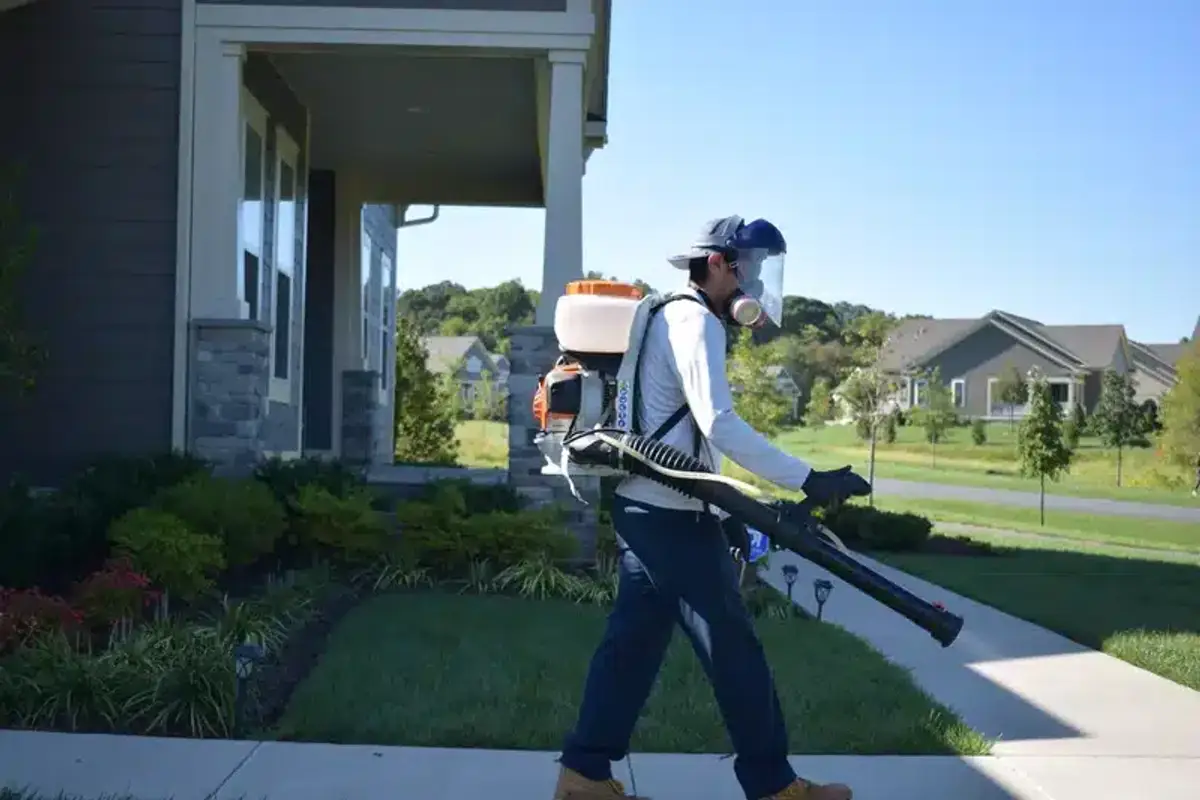
Common Homeowner Misconceptions About Moths and Butterflies
Through our years of service in the DMV area, we’ve encountered several persistent myths about the moth vs butterfly topic that can lead homeowners astray.
Not All Small Flying Insects Are the Same
Many people assume that any small brown flying insect in their pantry must be a fruit fly. However, pantry moths have different wing patterns, behaviors, and require completely different control approaches.
Our comparison guide on wasp vs bee identification demonstrates how subtle differences between similar insects can matter significantly for proper management.
Damage Pattern Misidentification
Not every hole in fabric comes from clothes moths. Carpet beetles create similar round holes in natural fibers, while other pests can cause different damage patterns entirely.
Similarly, just because you find an adult moth doesn’t automatically mean you have an active infestation. Sometimes moths simply wander in from outdoors without establishing breeding populations indoors.
Cedar Effectiveness Myths
While cedar products do provide some moth deterrent properties, they’re not a complete solution. The protective oils volatilize over time, requiring regular maintenance to remain effective.
Proper storage in airtight containers provides much more reliable protection than cedar alone, especially for valuable items like wool coats or silk garments.
When to Call Professional Help
Distinguishing between a moth vs butterfly becomes especially important when deciding whether you need professional pest control assistance. Generally, butterfly sightings don’t require intervention, while moths may signal developing problems.
Contact professionals when you notice multiple adult moths indoors over several days, especially in kitchen or closet areas. Early intervention prevents small problems from becoming major infestations.
Additionally, if you discover fabric damage, food contamination, or large numbers of moths around exterior lights, professional assessment can determine the species involved and recommend appropriate treatment strategies.
Based on my experience as a registered pest control technician, attempting DIY solutions often provides temporary relief while allowing moth populations to recover and spread. Professional treatment addresses the lifecycle comprehensively, targeting both visible adults and hidden developing stages.
If you’re dealing with what appears to be a moth problem in the DC metro area, don’t hesitate to reach out for professional guidance. Our family business has handled thousands of similar situations over our 57 years of service, and we’re equipped to help distinguish between harmless visitors and genuine pest concerns. Give us a call at 703-683-2000 or email us at info@bettertermite.com for an expert consultation about your specific situation.
Frequently Asked Questions
How can I tell the difference between a moth vs butterfly at night?
+
At night, you're almost certainly seeing a moth rather than a butterfly. Butterflies are strictly daytime insects and don't fly after dark. Moths are the ones attracted to porch lights and outdoor fixtures during evening hours.
Do butterflies ever cause damage inside homes?
+
Butterflies rarely become indoor pests and don't cause structural or fabric damage. If you're seeing damage to clothes, food, or other items, you're likely dealing with moths rather than butterflies. Moths are the species that create problems indoors.
What's the easiest way to identify a moth vs butterfly?
+
Look at the antennae - this provides the most reliable identification method. Butterflies have thin antennae with club-shaped ends, while moths have feathery, thread-like, or saw-toothed antennae that never end in clubs.
Why do I keep finding moths in my kitchen but never butterflies?
+
Pantry moths are attracted to stored food products like cereals, grains, and pet food commonly found in kitchens. Butterflies don't seek out these food sources and prefer flower nectar outdoors. Kitchen moths typically indicate contaminated stored products.
Can moths and butterflies interbreed?
+
No, moths and butterflies cannot interbreed. While both belong to the order Lepidoptera, they represent different evolutionary lineages that diverged millions of years ago. Their reproductive systems and behaviors are incompatible.
Are there any day-flying moths that might be confused with butterflies?
+
Yes, several moth species fly during daylight hours, including clearwing hawkmoths and some tiger moths. However, you can still distinguish them from butterflies by examining their antennae structure and body shape, even when they're active during the day.
What should I do if I find holes in my clothes - is this moth or butterfly damage?
+
Holes in natural fiber clothing typically indicate clothes moths, not butterflies. Look for additional signs like sand-like particles, silken webbing, or small larvae in the affected areas. Consider professional treatment if you discover multiple damaged items or live insects.
How many moth species vs butterfly species exist?
+
Moths vastly outnumber butterflies globally. Scientists have identified approximately 160,000-180,000 moth species compared to only 17,000-20,000 butterfly species worldwide. In the United States, there are roughly 11,000 moth species versus 750 butterfly species.
With five years of hands-on experience in the pest control industry, George Schulz is a registered technician with the Virginia Pest Management Association and a proud third-generation professional in a family business that's been protecting homes for over 57 years. He manages and trains a team of service pros while also leading internal research efforts—recently spearheading a deep-dive review of thousands of documents on pest control materials to hand-pick the most kid and pet friendly, most effective solutions tailored specifically for homes in the DC metro area.
